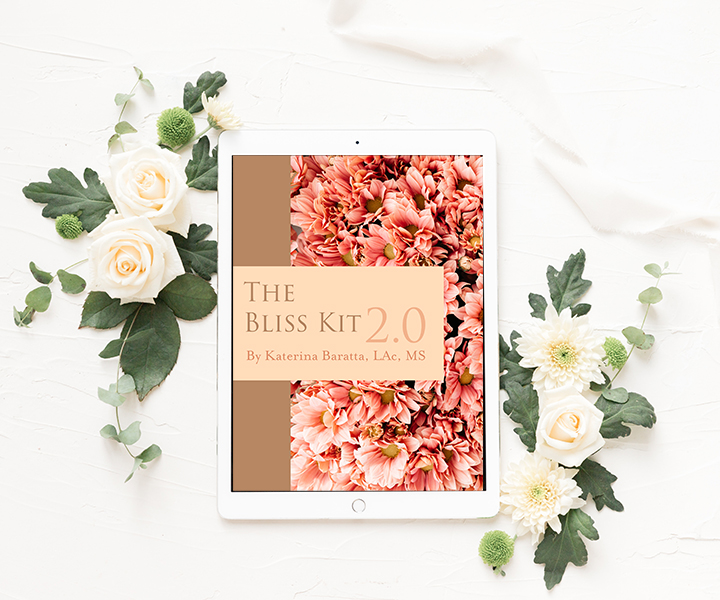How to Let Go and Relax
The wisest people in the world all say the same thing: Let go. Surrender. That is how you find inner peace.
It sounds so simple, and it’s easy when things are going well, but those moments never last very long, do they? Sooner or later, (usually sooner,) life presents us with situations that we find unacceptable but that are completely outside of our control.
And what do we do then? We put up a fight. But of course it does no good.
We know from physics that every force has an equal and opposite reaction. When we push against what is, we create a block within ourselves that leads to an inner tension. This is where suffering comes from.
I am no stranger to this.
With 2 small boys, mornings can be frustrating at my house.
If I had it my way, the first few hours of the day would be quiet and peaceful. Everyone would meander happily out of bed, get their clothes on without prompting, eat breakfast, be kind to each other, and brush their teeth without a fuss.
Instead, I often get yelled at: “The oatmeal’s too hot! Too hot! Hot! Hot! HOT!”
Or whined at: “I don’t want to get my clothes on my own!”
And though I’m trying not to get out of the habit of nagging repetition, I often hear myself asking them to do the same thing 5 times before anyone follows through.
There are ways around some of these hurdles, of course, and I’m starting to figure out little hacks that make the routine flow more smoothly.
If I start making breakfast earlier, for example, it’s cool enough to eat by the time the kiddos get to the table. Instead of having them get their own clothes, I have outfits laid out and ready to go in the living room ahead of time. And even though I’d love the extra quiet moments to myself, I turn on the lights in their room 10-15 minutes earlier than I used to, giving them more time to ease into the morning so I don’t have to physically drag them out of bed.
But obstacles and frustrations that cannot be predicted or remedied ahead of time always inevitably come up.
One kid gets mad because the other person broke his Lego structure. The other kid is too distracted by his book to respond with an apology, or even finish his breakfast.
I, maybe, didn’t sleep well, and start feeling the tension rise inside me at the 3rd repetition of—what I think is—a simple request instead of the 5th.
This is how life goes. We do what we can to control our circumstances, but inevitably, situations always arise that make us harden inside.
“Just let it go” sounds so simple, right? But it’s never quite as easy in the moment.
How are we supposed to let go when every muscle in our body tenses up and our mind screams curses and complaints loud enough to drown a siren?
My answer is practice.
To know how to practice, it’s helpful to recognize that there are two aspects of ourselves at play at all times.
One aspect is physical. It is how we visibly show up in the world through our body, personality, thoughts, feelings, and behavior.
The physical aspect may appear to be present, but slow down long enough to peek beneath the activity on the surface and you will find that it is actually just a collection of circumstances from the past—memories and habits that are wired into the nervous system—that are now being projected into predictions about the future.
Practice relaxing the physical aspect and you have an easier time accessing the subtle, energetic aspect of your Being.
The subtle aspect is firmly rooted in the Truth of the present moment, beyond conception.
This is your conscious awareness, and although tension and drama happen through it, it itself remains undisturbed, just as the essence of the ocean is not altered by the waves.
In my experience, the only way to let go, surrender to what is, and enjoy the ride when life is challenging, is to keep settling back into this subtle aspect.
The more we practice, the more automatic it becomes.
It doesn’t mean the challenges will go away, or even that you’ll miraculously change your automatic reactions to them.
In fact, very often when we do this inner work, we become more aware of the tension we’re carrying inside of us and it becomes more painful before it gets better.
In order to let go, we have to practice relaxing behind the tension, as Michael Singer says, instead of bracing against it.
The body might still go through the familiar motions—your heart might still beat fast and your jaw might still clench, for example—but we can observe these reactions happening without engaging with them and egging them on.
Recognition is the first step. Then comes practicing a new response.
Perhaps you’d find it helpful to take a few deep breaths.
Or maybe you’d like to press your feet into the ground, and imagine all of your tension dropping down into the earth below you where it can be recycled.
Some people like to put their hand on their heart, or on specific acupressure points to help them let go.
Others just need to remind themselves to “relax completely”.
The tension might still be there for a while, but we allow it to slowly soften by consciously choosing to relax.
Related: How to Release Emotional Tension with Qigong
When we stop pushing against the way things are, the tension in us eventually lets up.
When the tension in us subsides, we feel better, see life more clearly, and are able to respond more appropriately.
Letting go doesn’t mean pretending that everything is hunky-dory when it’s not.
Letting go means softening into the moment that you’re in, and giving up the fight against things you cannot change.
It means opening yourself up to what is, even if it’s painful. Remember, pain is not the same thing as suffering.
If you allow what is, to be, and meet each moment honestly, without mental projections, you will still change what you can, but you won’t cause more suffering when you can’t.
Want to more guidance as you practice?
Then sign up for my 14-Day Embodied Mindfulness Course. I can’t wait to see where it takes you!





